ReimaginED 2021: The Trends Shaping K-12 and Higher Education Beyond the Pandemic
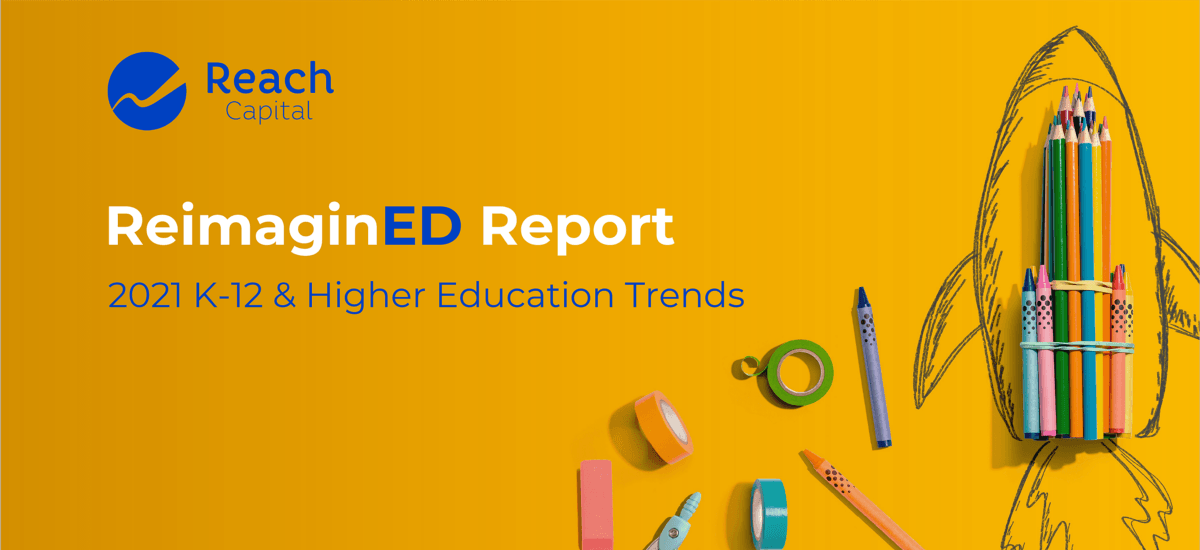
by Tony Wan, Head of Investor Content at Reach Capital
The pandemic forced the world to conduct the biggest experiment with online education ever. And what we’ve learned will fundamentally shape the future of teaching and learning.
The early days shone a spotlight on existing disparities. Thirty percent of U.S. K-12 students lacked the necessary technologies for remote learning. Access to live instruction varied greatly; Black and Hispanic students were twice as likely as their white peers to have had no real-time contact with teachers.
Yet we also saw great strides to address inequities. By the end of 2020, education leaders procured nearly 27 million K-12 devices — almost double the shipments in 2019. Along the way, schools partnered with technology providers to scale efforts to re-engage students who fell off the radar, and connect them to tutors and other live support.
Incubated in device-rich learning environments, the U.S. edtech ecosystem is now supporting one of the most technologically-enabled education systems in the world. And the influx of federal stimulus money and venture capital will further fuel ongoing efforts to transform education with a pedagogical bent towards passion-driven learning and creative expression.
Out of necessity, schools adopted online tools at unprecedented levels. But this will be the new reality, now that more educators, students and parents got a taste of how technology can empower and scale the best of human teaching and learning. It will allow schools to extend their village of support beyond the resources available in their communities.
This is a belief that we have long held as education technology investors — and one that the pandemic put to the test. And the response we’ve seen offers not just hope, but also evidence that the education system is fundamentally changing in ways that will better serve all learners.
This year, we are bringing back our ReimaginED report, a data-informed overview of the major trends in K-12 and higher education. Check out the full report above, and don’t hesitate to reach out if you’re building and funding innovative learning solutions.
Below are a few of the trends that we are excited about.
Redefining what’s possible with remote learning

While tools like Google Classroom and Zoom kept some semblance of instruction going during the pandemic, other widely leading educational tools helped people connect in meaningful ways, whether through playing learning games on Kahoot or doing science experiments in live, small-group classes on Outschool.
These experiences are redefining expectations of what online learning looks like. Once associated with students working individually in front of a computer, today’s remote learning experiences involve engaging content, hands-on activities, active discussion and social experiences that educators have long known to be important.
Families want remote learning as an option — and states and districts are responding. At the end of August, 135 of the 200 largest U.S. school districts were offering virtual academies. Supported by more federal funding and better teacher training, schools are laying the groundwork for richer, personalized experiences that have long been absent in online learning.
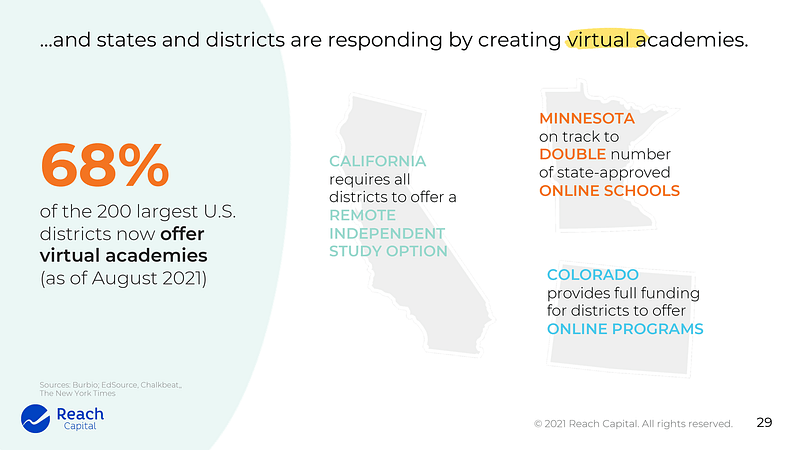
Kids are spending more time online connecting, building and earning
Confined largely to their homes, kids spent more time in front of screens (unsurprisingly). Shortly after schools closed last year, parents reported their children had doubled their time spent online to six hours per day.
But not all of that was spent passively consuming content. Many played and built games on popular platforms like Roblox, where some kids earned upwards of $500,000 from their creations. Some mastered the art of stock trading on Robinhood. We also witnessed the emergence of the “Study Web,” where kids study online, together, in communities across YouTube, Discord, TikTok and other online platforms. The most popular TikTok study-hashtag, #StudyTok, has accumulated over 1.2 billion views — and counting.
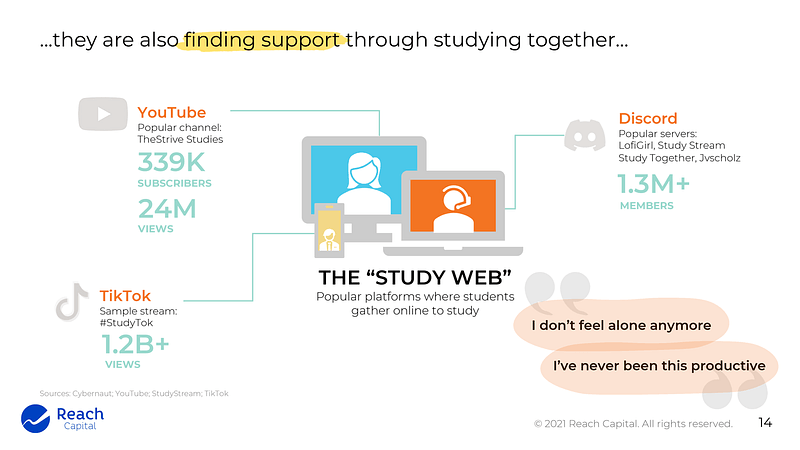
Connecting colleges and careers via work-relevant learning
Finding a job straight out of college is usually tough, and the pandemic only worsened prospects. As of March 2021, 46 percent of recent college graduates were unemployed or underemployed. Across the country, unemployment rates remained high through July even as the country reported record-level number of openings.
Technology providers are helping to bridge the gap in various ways. Where college job fairs were once limited to how far an employer was willing to travel, virtual career fairs on platforms like Handshake now enable more students to access opportunities, regardless of geography.
We’re also seeing colleges collaborate with employers to offer students work-relevant experience alongside academic credit as they complete real-world projects. Arizona State University’s work with Riipen to offer students career-relevant courses is just one of a growing number of partnerships that align career opportunities and academics in meaningful ways.
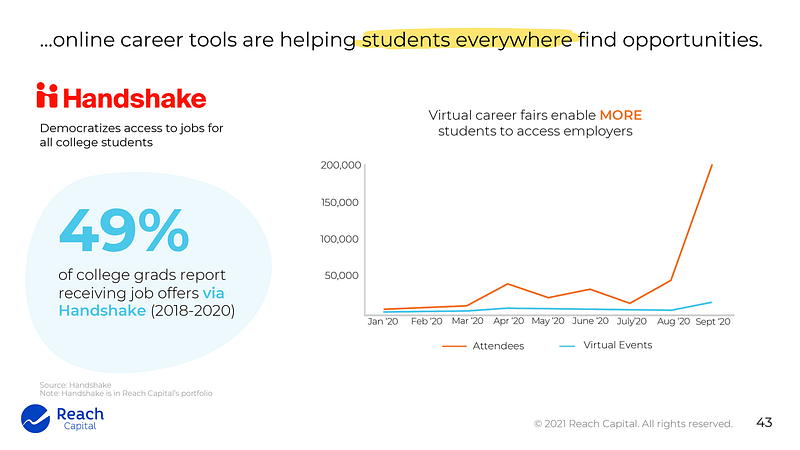
Investments are paying off — and attracting further investment
Through the first half of 2021, U.S. edtech startups raised more than $3.2 billion from venture capital and private equity firms — and is on track to reach $5.5 billion by year’s end.
Fueling these dollars are big exits. IPOs, once rarities in this industry, are occurring more frequently; already four companies — Coursera, Duolingo, Instructure and Powerschool — have listed this year. Nine-figure acquisitions are also not uncommon for leading digital tools like Clever, Epic and Nearpod as industry leaders begin to consolidate their market presence.
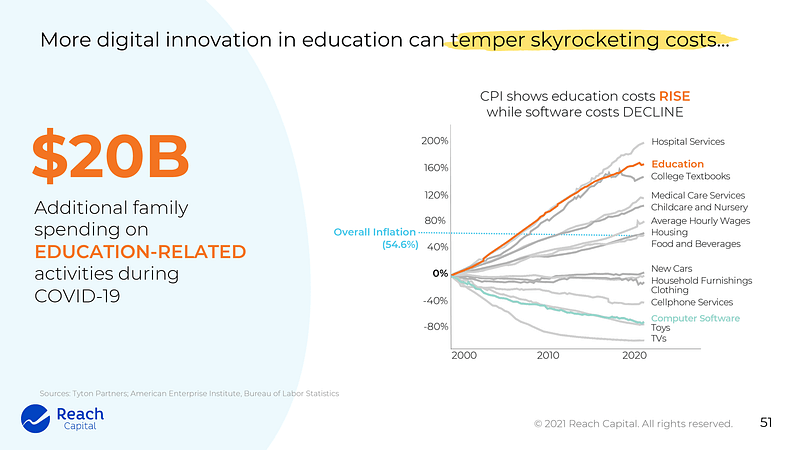
There is plenty of room to grow. As the cost of computer software has dramatically decreased this century, the cost of education has gone in the opposite direction. Just roughly 4 percent of the $6.4 trillion spent yearly in the global education market is on digital tools and services. Our long-game bet: continued digitization will lower the cost of education while making it more accessible for all.
Building, funding or supporting the next generation of innovative learning solutions? Submit your idea here or reach out to get in touch.







